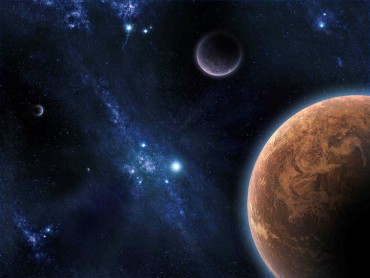Lawrence Krauss gives a talk on our current picture of the universe, how it will end, and how it could have come from nothing.Krauss is the author of many bestselling books on Physics and Cosmology, including “The Physics of Star Trek.”If you’ve ever wanted to answer that annoying question, “how could the Universe have formed from nothing”, then watch this video.Lawrence Krauss is funn
Science
Broadcast 9 February 1995, the final episode deals with plants that live in hostile environments. Attenborough visits Ellesmere Island, north of the Arctic Circle, to demonstrate that even in a place that is unconducive to life, it can be found. Algae and lichens grow in or on rock, and during summer, when the ice melts, flowers are much more apparent. However, they must remain close to the ground
Broadcast 2 February 1995, the fifth programme explores the alliances formed between the animal and plant worlds. Attenborough dives into Australia’s Great Barrier Reef and contrasts the nocturnal feeding of coral, on microscopic creatures, with its daytime diet of algae. Some acacias are protected by ants, which will defend their refuge from any predator. Besides accommodation, the guards are rew
Broadcast 26 January 1995, this episode examines how plants either share environments harmoniously or compete for dominance within them. Attenborough highlights the 1987 hurricane and the devastation it caused. However, for some species, it was that opportunity for which they had lain dormant for many years. The space left by uprooted trees is soon filled by others who move relatively swiftly towa
Broadcast 19 January 1995, the next instalment is devoted to the ways in which plants reproduce. Pollen and a stigma are the two components needed for fertilisation. Most plants carry both these within their flowers and rely on animals to transport the pollen from one to the stigma of another. To do this, they attract their couriers with colour, scent and nectar. It isn’t just birds that help poll
Broadcast 12 January 1995, this programme is about how plants gain their sustenance. Sunlight is one of the essential requirements if a seed is to germinate, and Attenborough highlights the cheese plant as an example whose young shoots head for the nearest tree trunk and then climb to the top of the forest canopy, developing its leaves en route. Using sunshine, air, water and a few minerals, the l
Broadcast 5 January 1995, the first episode looks at how plants are able to move. The bramble is an aggressive example: it advances forcefully from side to side and, once settled on its course, there is little that can stand in its way. An altogether faster species is the birdcage plant, which inhabits Californian sand dunes. When its location becomes exposed, it shifts at great speed to another o
Today, the way ecology is being incorporated into architecture has evolved considerably. Sustainable architecture, or green architecture, aims to minimize the negative impact of buildings on the environment by enhancing efficiency and moderating the use of materials, energy, and space.Spewing carbon dioxide, generating masses of waste, and consuming alarming quantities of energy and water, our
Four years after she nearly died from rabies, Jeanna Giese is being heralded as the first person known to have survived the virus without receiving a preventative vaccine. But Giese (pronounced Gee-See) says she would gladly share that honor with others if only doctors could show that the treatment used to save her could spare other victims as well. “They shouldn’t stop ’till it’s perfected,” said









